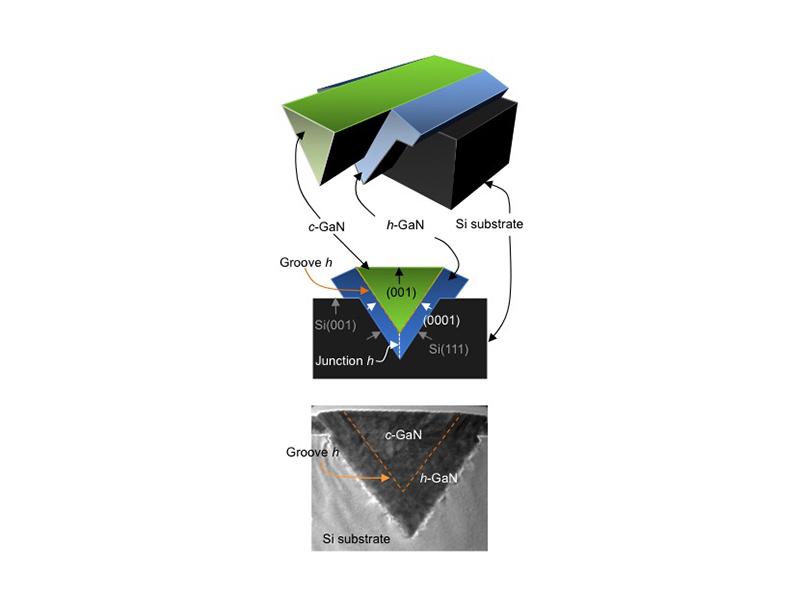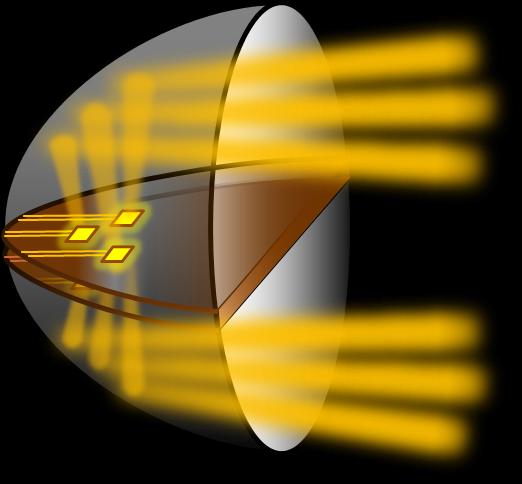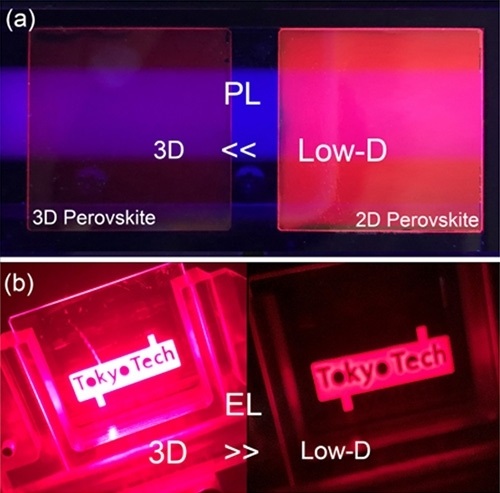February 8, 2017
By Jessica Otitigbe
Troy, N.Y. — A team of faculty and graduate students from the Center for Lighting Enabled Systems & Applications (LESA), headquartered at Rensselaer Polytechnic Institute, and the University of New Mexico (UNM) were recently awarded a U. S. patent titled “Growth of Cubic Crystalline Phase Structure on Silicon Substrates and Devices Comprising the Cubic Crystalline Phase.” Cubic gallium nitride (GaN) devices hold promise for addressing two long-standing issues that limit the performance of light emitting diodes (LEDs).
The research team and other investigators are working to develop a LED manufacturing processes that will allow LEDs to shine brighter and in more colors. The material will be used in applications that include lighting for homes that would create brighter, more colorful, and efficient displays, as well as high-efficiency power electronics that are used to improve electric vehicles and renewable energy system performance.
According to the research team, poor performance at longer emission wavelengths, known as the green gap problem, and poor performance at higher operating current, known as efficiency droop, impact LED performance. While GaN devices have excellent performance in the blue regions of the spectrum, these two technical problems limit the overall performance capability for future high-efficiency color-tunable lighting systems and advanced display technologies.
The patent was issued on December 13, 2016, to Principal Investigator Steven R.J. Brueck, principal investigator and distinguished professor emeritus with the UNM Department of Electrical & Computer Engineering (ECE), UNM Center for High Technology Materials (CHTM) faculty member, and director emeritus of CHTM; inventors Sueng-Chang Lee (UNM), and a team from Rensselaer. The Rensselaer/LESA team includes Christian Wetzel, professor of physics, applied physics, and astronomy and co-inventor of the patent; along with Theeradetch Detchprohm, who received his Ph.D. from Nagoya University in Nagoya, Japan, and served as a research associate professor in the Future Chips Constellation; and Christoph Stark ’12 who received a Ph.D. in physics from Rensselaer, and now works for a startup company in Germany.
By using a “nonpolar facet” of cubic GaN, the research team has demonstrated emission across the visible spectrum from the cubic InGaN/GaN material system that offers significant opportunities for higher efficiency full-spectrum lighting and displays.
GaN crystals can be grown with either cubic or hexagonal (also known as wurtzite) phases. All commercial GaN LEDs are based on hexagonal materials, typically grown on sapphire substrates. “The hexagonal phase typically forms most easily, as it is the lowest energy crystallographic structure,” said Wetzel. “Previous attempts to grow cubic GaN crystal structures have produced poor quality, heavily defected mixed phase materials.” Wetzel and Brueck are both recognized leaders in the research and development of LED-based solid-state lighting.
“The patented UNM/RPI growth process uses inexpensive Si wafers available in much larger sizes and lower defect densities than sapphire,” said Brueck. “The silicon surface is first patterned with an array of nanoscale grooves that lead to a unique, geometrically driven phase segregation that separates the cubic phase and promotes its growth at the expense of the hexagonal phase GaN material. Additional quantum well layers of InGaAs are added after the pure cubic phase GaN structure has been established to create the light emitting material used to fabricate cubic LEDs.”
The research at LESA exemplifies The New Polytechnic, an emerging paradigm for teaching, learning, and research at Rensselaer. The New Polytechnic emphasizes and supports collaboration across disciplines, sectors, and regions to address the great global challenges of our day, using the most advanced tools and technologies, many of which are developed at Rensselaer. Research at Rensselaer addresses some of the world’s most pressing technological challenges—from energy security and sustainable development to biotechnology and human health. The New Polytechnic is transformative in the global impact of research, in its innovative pedagogy, and in the lives of students at Rensselaer.
Ultimately, LESA’s vision is focused on creating digitized illumination for new applications in lighting, healthcare, building management, horticulture, and advanced 5G wireless communications platforms.
Note: Date of Patent: December 13, 2016, No. 9,520,472
About the Center for Lighting Enabled Systems & Applications (LESA) ERC
Funded primarily by the National Science Foundation (NSF), the LESA ERC is an interdisciplinary, multi-university center developing “Smart Lighting Systems that See and ThinkTM”. The center engages faculty members, graduate students, research staff, and undergraduates to work on research leading to smart lighting systems with adaptive and controllable properties that will change the way society uses lighting. The center joins academia, industry, and government in partnership to produce transformational engineered systems, along with engineering graduates who are adept at innovation and primed for leadership in the global economy. The LESA ERC is headquartered at Rensselaer Polytechnic Institute in Troy, N.Y., and partners with Boston University, the University of New Mexico, and Thomas Jefferson University to achieve its objectives. http://lesa.rpi.edu















